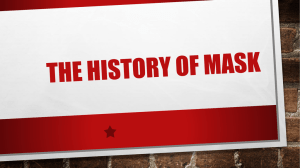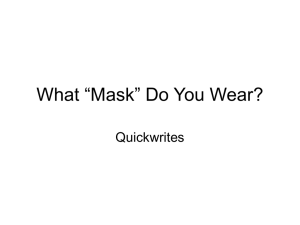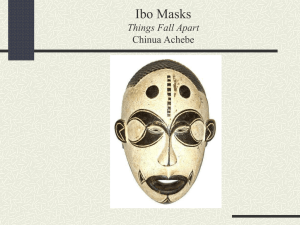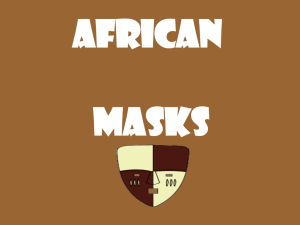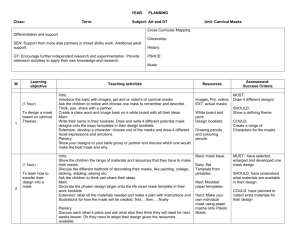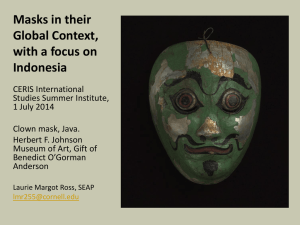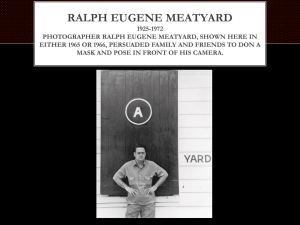Understanding African Masks
advertisement
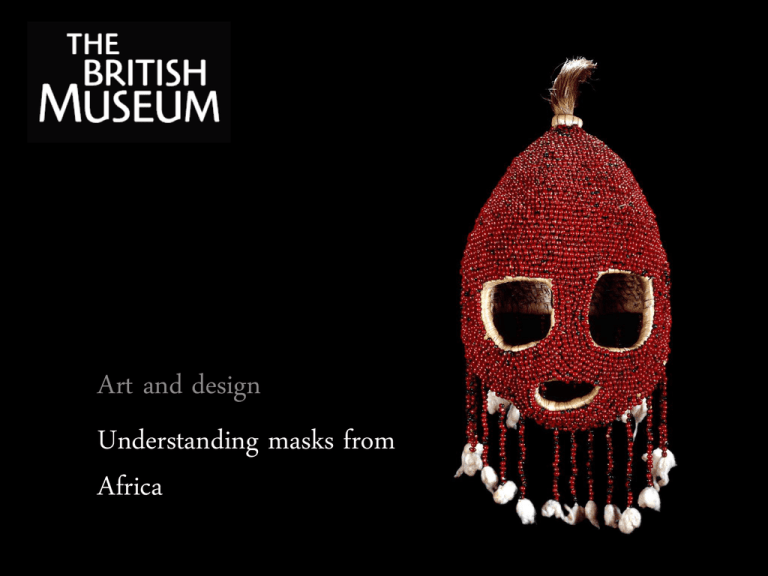
Art and design Understanding masks from Africa Why do people wear and use masks? to transform to celebrate to conceal to scare to shock to disguise Have you ever worn a mask? On what occasions and why? A masquerade is any occasion where masks are worn. Masquerade ceremonies protect and give good fortune to communities, commemorate ancestors and bring prosperity. Compare these two masks – look for similarities and differences. Imagine what it might be like to wear these masks. These masks would be worn with other costume and jewellery. What would the whole masquerade have looked like? Wooden mask for Gelede masquerade Yoruba people, Nigeria probably late 19th century Carved wooden mask for Epa masquerade Yoruba people, Nigeria probably late 19th century Symbols and meanings What are the similarities between these masks in their form and material? What are the differences? How might they be worn? Symbols and meanings The antelope is a symbol of cultivation and success in agriculture. A chameleon rests on a cockerel’s comb. The chameleon is an important symbol, which can mean many things. Why do you think that is? Although worn by men, Bamana masks have genders. The chameleon can to bring long life or death, abundance or infertility, depending on its colour. The number of spikes or horns on a mask indicates if it is masculine (3, 6 or 9 spikes), feminine (4 or 8) or cross-gender (2, 5 or 7). The cockerel is a messenger of God and symbolises fertility. Which is this? Carved wooden mask Bamana people, Mali, West Africa probably early 20th century Carved wooden headdress decorated with seeds Afo people, northern Nigeria 20th century Materials Examine these two masks from different regions of Africa. Identify all the different materials they are made from. What different processes have been used to create these masks? How would it feel to wear each of these masks? Imagine the weight and sound. Materials The two masks are made of a variety of natural materials, including seeds, vegetable fibres, skins and wood. What effect using natural materials have on the texture and the colour? Mask (kifwebe) Songye people, Democratic Republic of Congo 19th century Mask of vegetable fibre, hair and red abrus seeds Angas people, northern Nigeria mid-20th century Masks for display Read the captions. What suggests that these masks were not made to be worn? Who do you think they depict? Man or woman? High or low status? Why do you think this? So how do you think they might have been used? Helmet mask for the Ododua ritual Made of brass Edo peoples, Benin, Nigeria 18th century Height 33cm Ivory mask Edo peoples, Benin, Nigeria probably 16th century Height 24cm Portraits for the afterlife Both these masks are from Egypt and were placed over the face of the mummy of a dead person. Who would ever see these masks? Do death masks conceal anything? Mummy mask of Satdjehuty Egypt Early 1500 BC Mummy portrait mask from the Roman period Egypt about AD 120 Gender Most masks were worn and made by men. The mask on the left was worn by women at an initiation ceremony. The sculpture on the right is of a figure from a male masquerade. It was made by a female Nigerian artist who lives in London. Wooden helmet mask Mende people, Sierra Leone Early 20th century Sokari Douglas Camp Big Masquerade with boat and household on his head Nigeria, 1995 Questions to consider when looking at objects ... • • • • • • How old do you think it is? What does it appear to be made from? How do you think it was it made? How do you think it was used? What was it for? Who or what sort of person do you think may have used it? What does it tell you about the culture it comes from? Visit the main Museum website www.britishmuseum.org Explore contains over 4000 highlight objects from the Museum’s collection. You can use Explore to search for more masks from Africa. www.britishmuseum.org/explore/explore_introduction.aspx


